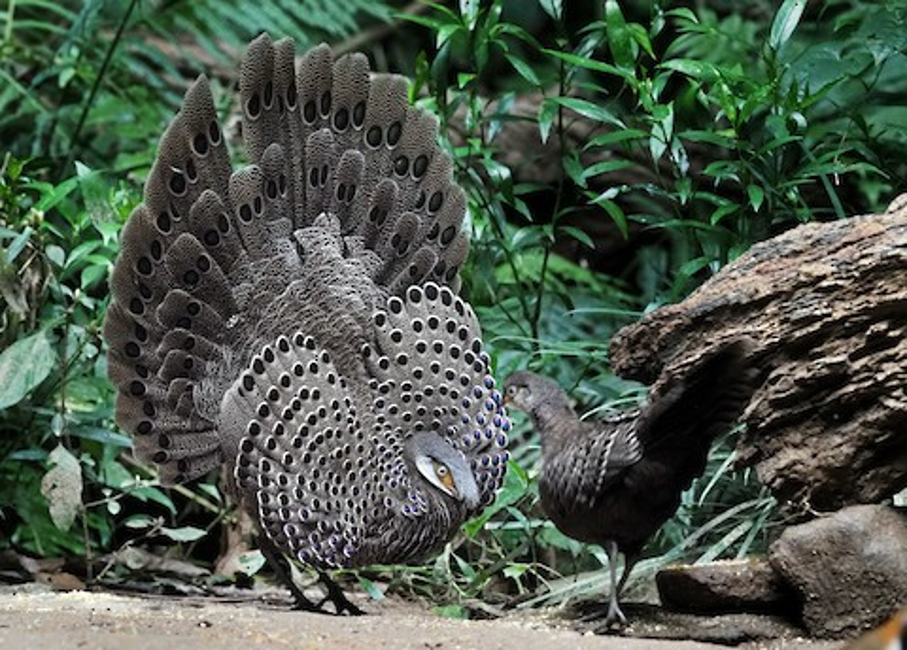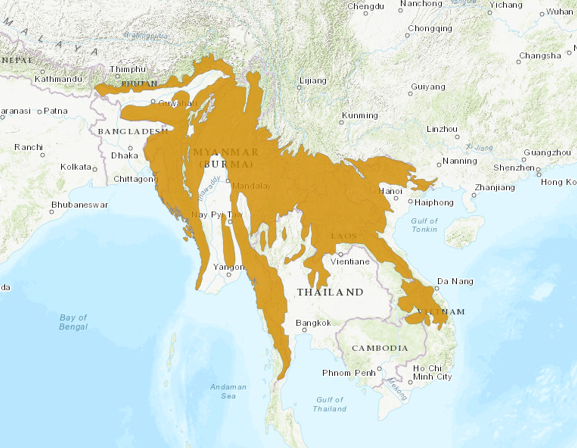Birdfinding.info ⇒ Shy and elusive, and therefore rarely seen, although it is locally common in many areas. Usually observed only at established hides where some are drawn to food or water and become habituated. Such sites where it can often be found are at Hongbenghe in Yunnan, China, and in Thailand at Mae Wong National Park and Song Phi Nong at the edge of Kaeng Krachan National Park. In Assam, it is seen regularly at Eaglenest Wildlife Sanctuary and Jeypore Forest Reserve.
Gray Peacock-Pheasant
Polyplectron bicalcaratum
Southeast Asia, where it inhabits dense forest undergrowth from lowlands up to about 2,000 m elevation.
Widely distributed across the hill country of southeastern Asia, from the lower slopes of the Himalayas in eastern India (west to Sikkim) and Bhutan east to southern China (mainly Yunnan; at formerly also in Guangxi), and northern Vietnam, south through eastern Bangladesh, Myanmar, northern and western Thailand, and Laos to the northern Malay Peninsula, northeastern Cambodia, and south-central Vietnam.
Identification
A large, robust pheasant with a long, broad tail. Medium-gray overall (more brownish in western populations), and intricately scalloped with whitish and blackish bars.
The wings, back, and tail are profusely adorned with rows of iridescent “eye-spots” that can appear various shade of blue or violet.
The cheek and throat are whitish, and the facial skin is bare and dull-yellow, often framed by a blackish browline.
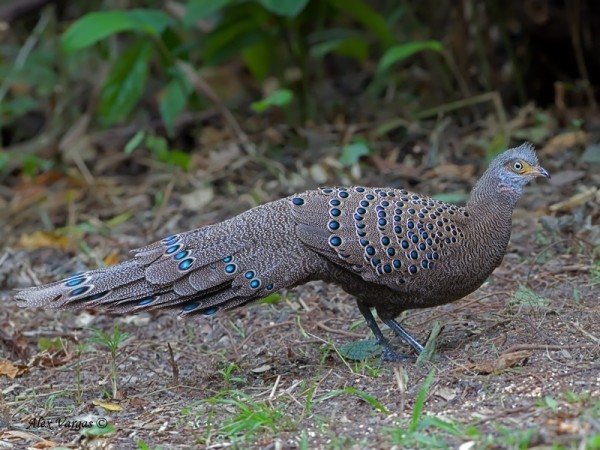
Gray Peacock-Pheasant, male with crest relaxed and all spots on wings, back, and tail glinting blue. (Mae Wong National Park, Nakhon Sawan, Thailand; February 16, 2012.) © Alex Vargas
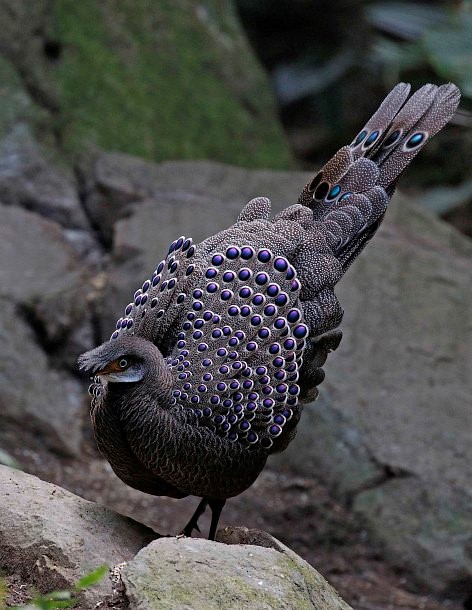
Gray Peacock-Pheasant, male, apparently preparing to display, with crest flattened forward, and bejeweled with eye-spots glinting violet and turquoise. (Xi Niao Gu, Yunnan, China; March 10, 2017.) © David Fisher / Sunbird
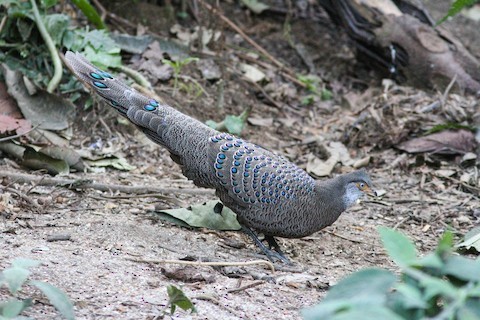
Gray Peacock-Pheasant, male with tail held rigid. (Hongbenghe, Yunnan, China; February 2, 2019.) © Paul Hyde
Males are somewhat larger than females, and have a peculiar crest of gray feathers that can be either relaxed and bushy, raised in a triangular peak, or flattened forward to extend over the face.
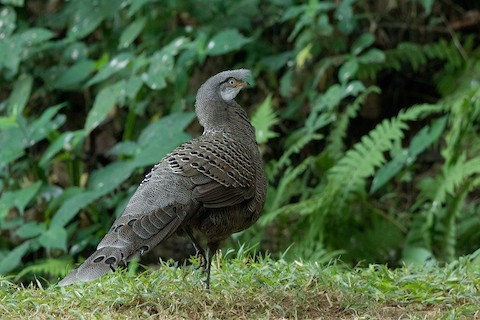
Gray Peacock-Pheasant, male with crest flattened forward and spots appearing black. (Hongbenghe, Yunnan, China; January 14, 2019.) © Ayuwat Jearwattanakanok
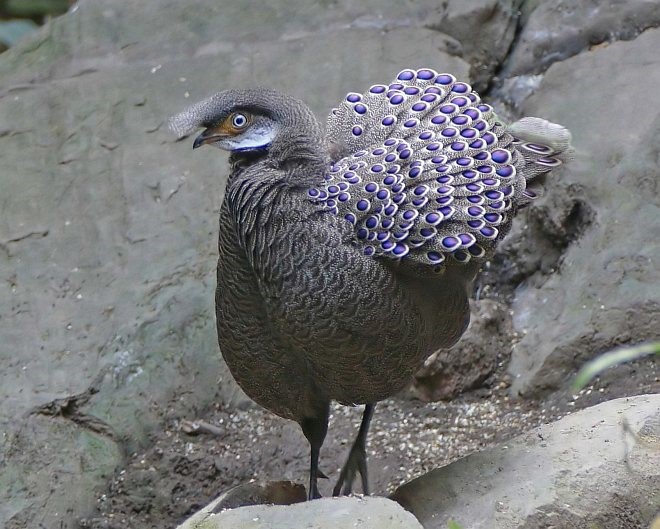
Gray Peacock-Pheasant, male with crest flattened forward and spots on wings and back glinting violet. (Xi Niao Gu, Yunnan, China; March 9, 2017.) © David Fisher / Sunbird
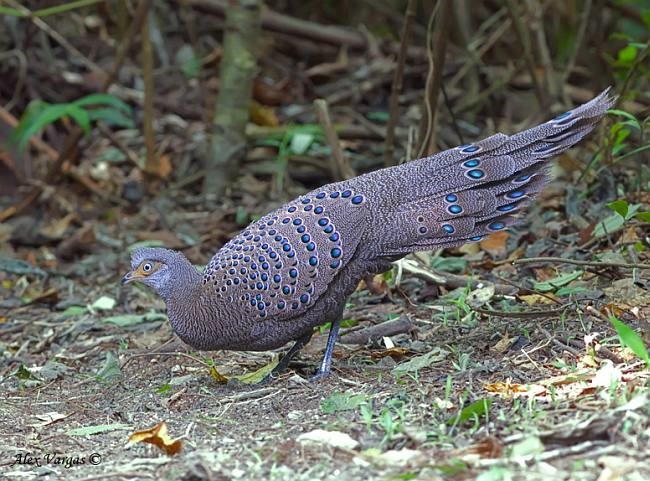
Gray Peacock-Pheasant, male with crest relaxed and eye-spots glinting violet and turquoise. (Mae Wong National Park, Nakhon Sawan, Thailand; February 16, 2012.) © Alex Vargas
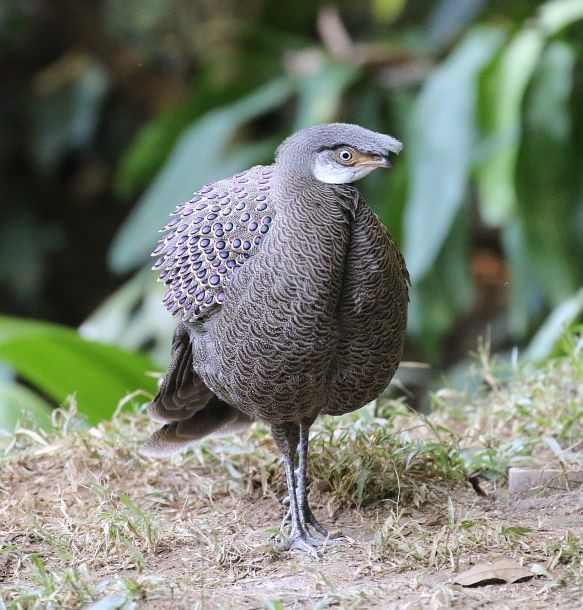
Gray Peacock-Pheasant, male with crest flattened forward. (Yingjiang, Yunnan, China; December 26, 2018.) © Carrie Ma
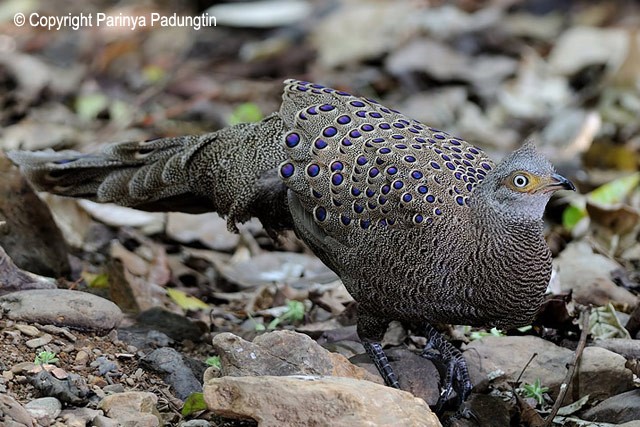
Gray Peacock-Pheasant, male. (Kaeng Krachan National Park, Phetchaburi, Thailand; April 6, 2010.) © Parinya Padungtin
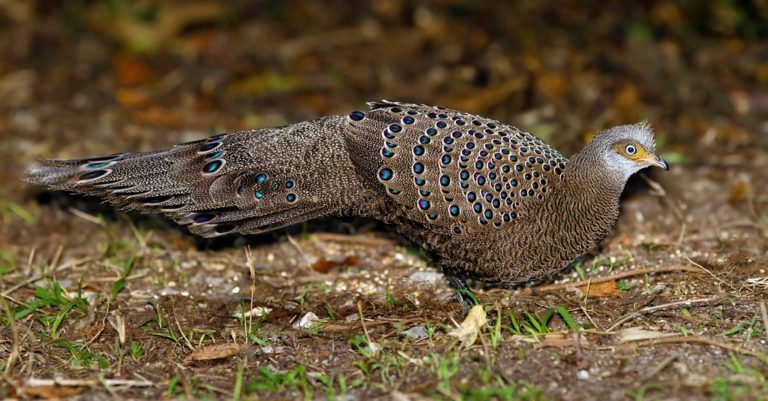
Gray Peacock-Pheasant, male with spots glinting blue and turquoise. (Chong Yen, Mae Wong National Park, Nakhon Sawan, Thailand; February 24, 2012.) © Gary Kinard
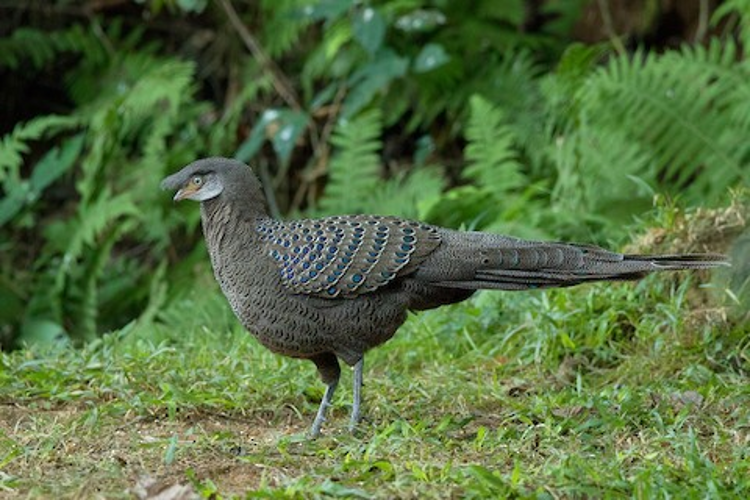
Gray Peacock-Pheasant, male with crest flattened forward and spots on wings and back glinting blue. (Hongbenghe, Yunnan, China; January 14, 2019.) © Ayuwat Jearwattanakanok
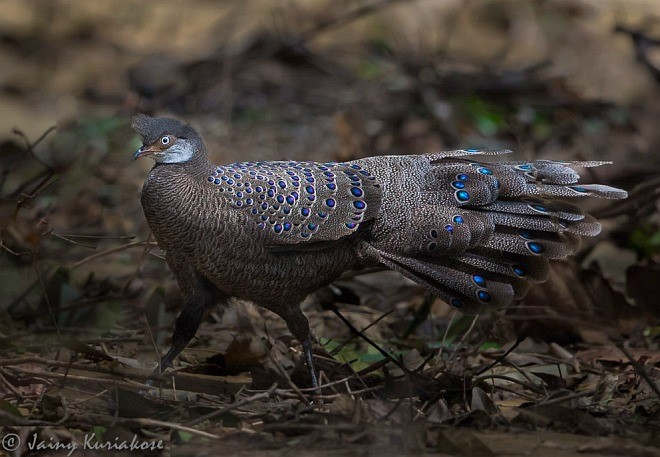
Gray Peacock-Pheasant, male with tail partly fanned. (Dampa, Mizoram, India; March 31, 2017.) © Jainy Kuriakose
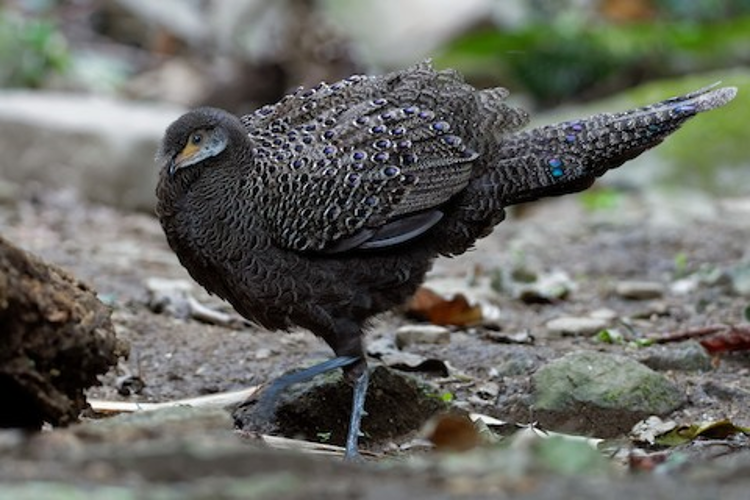
Gray Peacock-Pheasant, male. (Hongbenghe, Yunnan, China; May 4, 2017.) © Vincent Wang
When displaying, the male fans its tail and wings (peacock-style), presenting a spectacular oval disk covered in eye-spots.
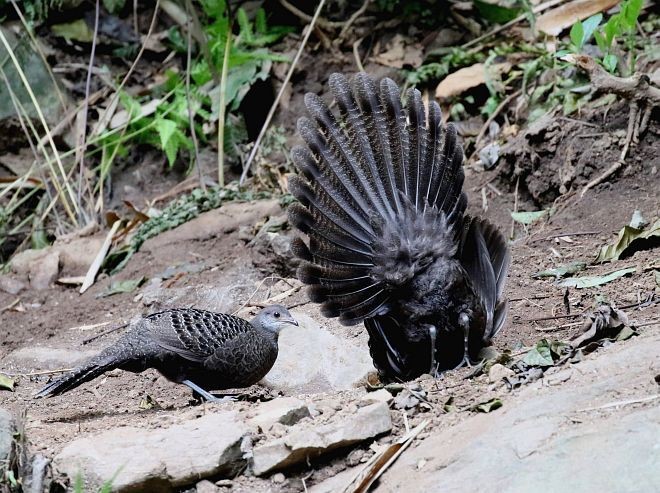
Gray Peacock-Pheasant, male displaying to female. (Yingjiang, Yunnan, China; December 25, 2016.) © Carrie Ma
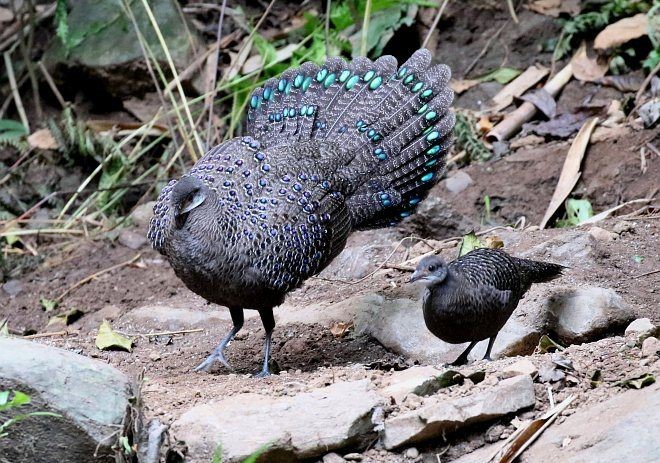
Gray Peacock-Pheasant, male displaying beside female. (Yingjiang, Yunnan, China; December 25, 2016.) © Carrie Ma
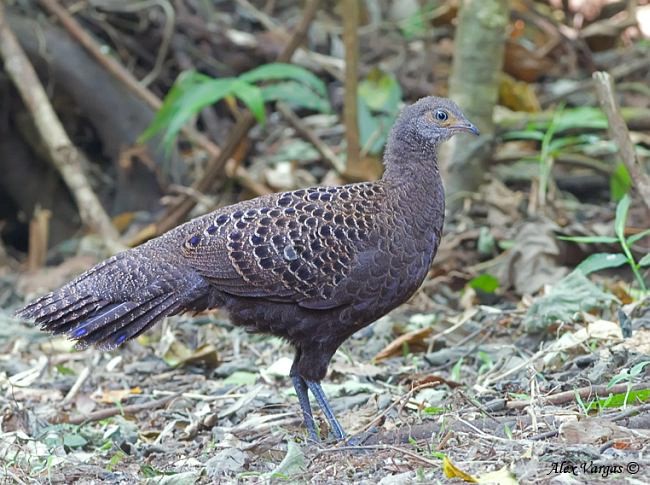
Gray Peacock-Pheasant, female. (Mae Wong National Park, Nakhon Sawan, Thailand; February 16, 2012.) © Alex Vargas
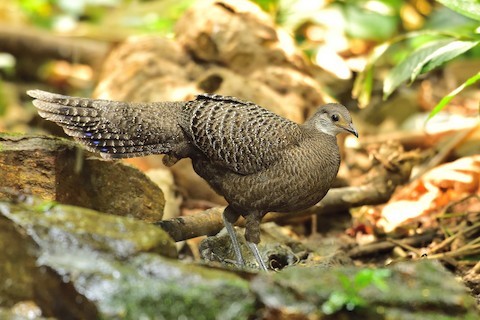
Gray Peacock-Pheasant, female. (Yingjiang, Yunnan, China; February 27, 2018.) © Xiwen Chen
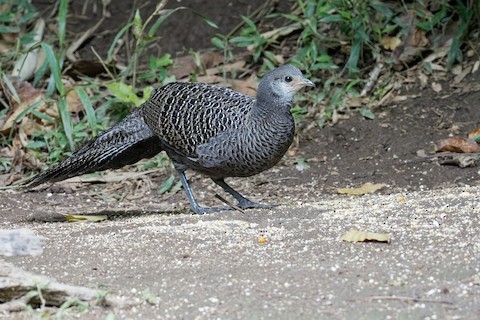
Gray Peacock-Pheasant, female. (Shiti Village, Yunnan, China; January 9, 2020.) © Vincent Wang
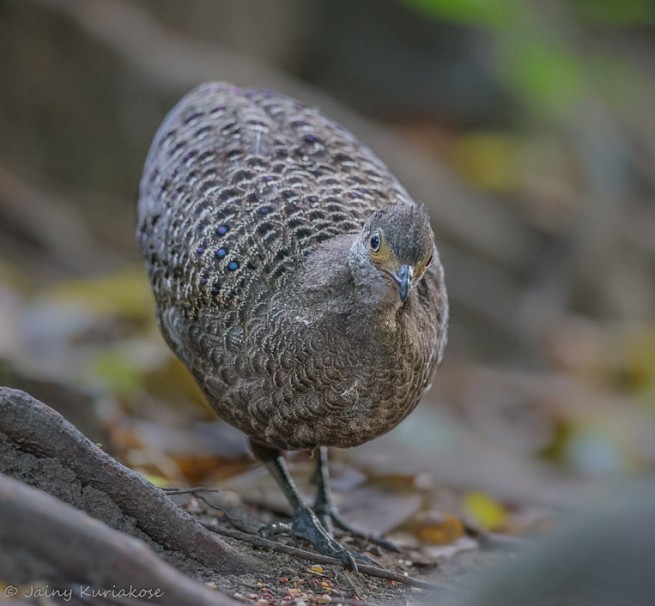
Gray Peacock-Pheasant, female. (Mae Wong National Park, Nakhon Sawan, Thailand; February 14, 2014.) © Jainy Kuriakose
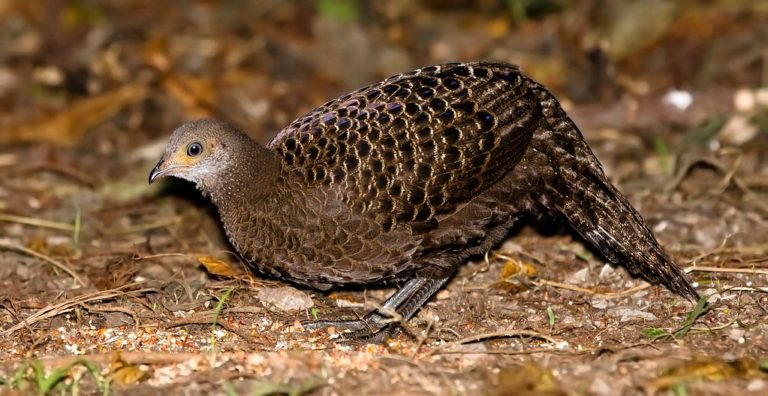
Gray Peacock-Pheasant, female. (Chong Yen, Mae Wong National Park, Nakhon Sawan, Thailand; February 24, 2012.) © Gary Kinard
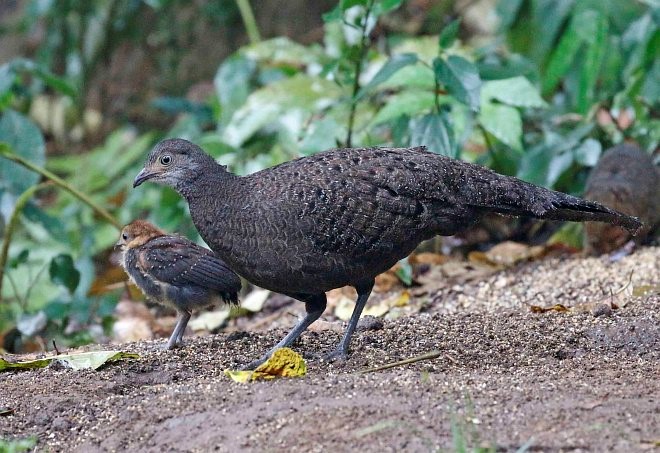
Gray Peacock-Pheasant, female with chick. (Xi Niao Gu, Dehong, Yunnan, China; March 9, 2017.) © David Fisher / Sunbird
Notes
Polytypic species consisting of three recognized subspecies.
References
BirdLife International. 2016. Polyplectron bicalcaratum. The IUCN Red List of Threatened Species 2016: e.T22736199A95127488. https://dx.doi.org/10.2305/IUCN.UK.2016-3.RLTS.T22736199A95127488.en. (Accessed March 20, 2020.)
eBird. 2020. eBird: An online database of bird distribution and abundance. Cornell Lab of Ornithology, Ithaca, N.Y. http://www.ebird.org. (Accessed March 20, 2020.)
Madge, S., and P.J.K. McGowan. 2002. Pheasants, Partridges, and Grouse: A Guide to the Pheasants, Partridges, Quails, Grouse, Guineafowl, Buttonquails, and Sandgrouse of the World. Princeton University Press, Princeton, N.J.
McGowan, P.J.K., G.M. Kirwan, and D.A. Christie. 2020. Grey Peacock-pheasant (Polyplectron bicalcaratum). In: del Hoyo, J., Elliott, A., Sargatal, J., Christie, D.A. & de Juana, E. (eds.). Handbook of the Birds of the World Alive. Lynx Edicions, Barcelona. https://www.hbw.com/node/53515. (Accessed March 20, 2020.)
Robson, C. 2002. Birds of Thailand. Princeton University Press, Princeton, N.J.
Xeno-Canto. 2020. Grey Peacock-Pheasant – Polyplectron bicalcaratum. https://www.xeno-canto.org/species/Polyplectron-bicalcaratum. (Accessed March 20, 2020.)
